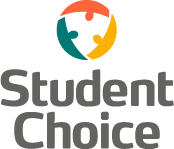Reading. Riting. Rithmetic. These well-known Rs might be outdated in today’s education world, but nearly six years ago, Credit Union Student Choice showed how they could serve as a helpful tool for credit unions that were evaluating the risk and rewards of private student lending.
Just as standards have changed in education, so, too, has the landscape shifted for education lenders. Yet, the original Rs, along with several more listed below, are still excellent guideposts for credit unions to consider when implementing a private student lending program or managing an existing one.
Regulation
As credit unions know all too well, we exist in a highly regulated environment. In late 2013, NCUA shone a regulatory spotlight on private student lending by issuing a supervisory letter to credit unions (LCU2013-15) on this very topic. Although the knee-jerk reaction to additional regulatory focus is likely negative, the NCUA did a good job within the letter of providing an overview and background on private student lending, including defining field staff responsibilities and outlining risk management expectations. Credit unions must review and understand these expectations carefully and can take comfort in the fact the NCUA has provided much-needed clarity to the exam process. Key takeaways include:
- Know Your Program: Most credit unions offering a private student lending program will rely on a third-party (such as a CUSO) to administer key aspects of the program. That said, it is imperative that credit unions NOT cede control of their program to an external party. They must fully understand the risks and have a plan in place to manage the program moving forward.
- Know Your Portfolio: For obvious reasons, it’s imperative that loans not magically appear on credit union balance sheets and go unchecked. A comprehensive and ongoing portfolio analysis strategy should be implemented in order to monitor performance and adjust program guidelines as needed.
- Know Your Partners: Approximately 700 credit unions now offer some type of private student loan product (with nearly $3.8 billion in total loans, according to 2016 year-end NCUA Call Report data), yet this is a new asset class with unique characteristics for most credit unions. For example, in-school loans feature school-certification and in-school loan deferment. Like other complex lending programs (credit cards for example), working with a third party to properly administer the program is a smart decision. As is the case with any situation where a credit union works with a third party, it is imperative to perform ongoing due diligence to build a successful program and ensure third party capability.
Return On Assets
Delivering superior value to borrowers and building long-term member relationships are the ultimate goals for credit unions in their lending programs, but those are only achievable if value is also being returned to the bottom line. In light of credit and regulatory risk in private student lending, is it really possible for credit unions to achieve a positive ROA in this asset class? In a word, yes.
A recent analysis determined that a credit union that first launched its private student loan program with Student Choice in 2009 and now has nearly $30 million in PSL balances is achieving a Return on Average PSL Asset (ROAA) of 3.27%. This calculation factored in loan yield, cost of funds, loan loss allowance, origination and servicing costs, as well as other program expenses. Equally as important as the strong repayment performance and positive ROA is the fact that borrowers are receiving fair-value loans with favorable repayment terms from a credit union they can trust … truly, a win-win situation. This scenario is not uncommon, and shows that with proper underwriting and program guidelines, private student loans can perform very well.
In spite of the fact that many loans within the Student Choice portfolio were originated during the second-worst recession in our nation’s post-industrial age economy, the performance has been extremely strong. in reviewing undergraduate loans only, comprising more than $1 billion of the most seasoned loans in repayment (as of Q4 2016):
- Less than 1.5% of loans in repayment were 60 or more days past due.
- Annualized gross charge-off rates stood at only 0.68%.
Relationships
At conferences and industry events, credit unions are bombarded by the message that they must build relationships with young adults. Many interesting ideas are thrown about as to how to do this, but what about simply offering a product that we know for a fact is needed by millions of college-age kids (and their families) every year? Credit unions offering a PSL product have an immediate, powerful opportunity to connect with young adults, not to mention the millions of parents who will serve as co-borrowers.
According to research conducted with nine credit unions (representing nearly 8,000 borrowers) that offer the Student Choice lending program, average checking account penetration for their Student Choice borrowers was nearly 65%, while more than 21% had a credit card and 10% had an auto loan. These numbers indicate young adult borrowers are likely to continue to seek out their credit union for their ongoing financial needs.
These are real relationships with members who have a lifetime of financial services needs ahead of them, and a real connection to a credit union that helped them during the most critical stage of their young financial lives.
This article appeared originally on CreditUnions.com in March 2017.
